Company of Heroes 3 makes destruction an art form
How Relic is building then breaking World War 2 Italy.

Company of Heroes 3's battles are full of these big, deafening moments where the orchestral score starts to swell, the bombs start falling and two forces collide. The gunfire, explosions and collapsing buildings create this thundering cacophony that tests your ability to keep cool under pressure. When the chaos settles and the smoke clears, you won't recognise the place. It's destruction and transformation, leaving behind a grim new map.
It's a stunning spectacle, but when you're desperately trying to keep your fleshy soldiers alive and your tanks out of the path of those bombs you don't have much time to appreciate the obsessive attention to detail that gives birth to these dramatic, earth-shaking confrontations. Not unless you use the tactical pause system to do a spot of sightseeing, anyway.
Destruction begins with construction. "It's both all about making things beautiful, but also making them right," says art director Tristan Brett. "So we build all the internal framework of houses, the tiles and everything are really built so they act like the proper material and slide off the framework. So a lot of thought went into how we build the structures, before we talk about how to break them."
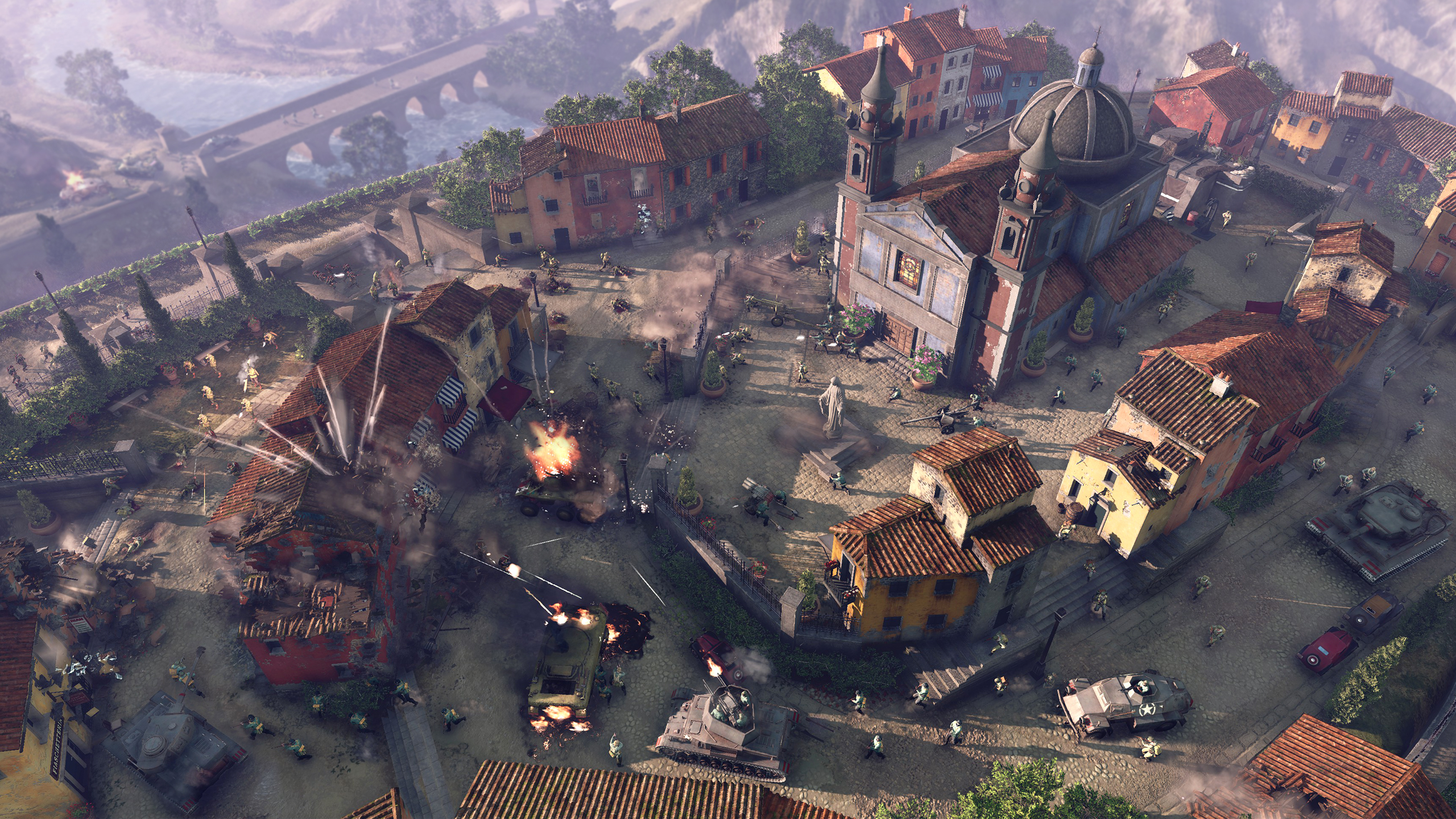
In a lot of maps, you can already see a bit of the war's impact straight away, but when you're walking through the Italian countryside with the sun beating down on your troops, or sauntering through a quiet village, the walls all painted vibrant colours, you feel lulled into a false sense of security. Just ignore the occasional sandbag or anti-tank gun and enjoy your walk. The war seems like a distant, intangible thing. It's idyllic—until it's very much not.
"The Italian landscape is so beautiful and the art creation in our game is absolutely gorgeous," says audio director Aaron Janzen. "And then we're going to destroy it. But that is a wonderful platform for audio, or for art, even. That's the juxtaposition that gives us a lot of flexibility in the sound design. It's kind of like a sound designer's dream. Because you can have quiet moments where we can immerse you in the Italian landscape, when there's no warfare happening."
When it's peaceful, you can hear the birds, the breeze, and a soldier reloading his gun. These subtle sound effects, the gears grinding, the tank treads trundling through the dirt, are given just as much love as the big, bombastic explosions. You might spend most of your time distant, watching from above, but you can still move in close, and the sound design in particular makes you feel like you're right in the middle of it—listening for threats, for audio cues. Janzen says the goal is for every vehicle and weapon to have a recognisable, distinct sound, letting players react and put together a strategy based on those clues. But they also generate drama. "If the Sherman arrives on the scene, we want it to terrify our enemies."
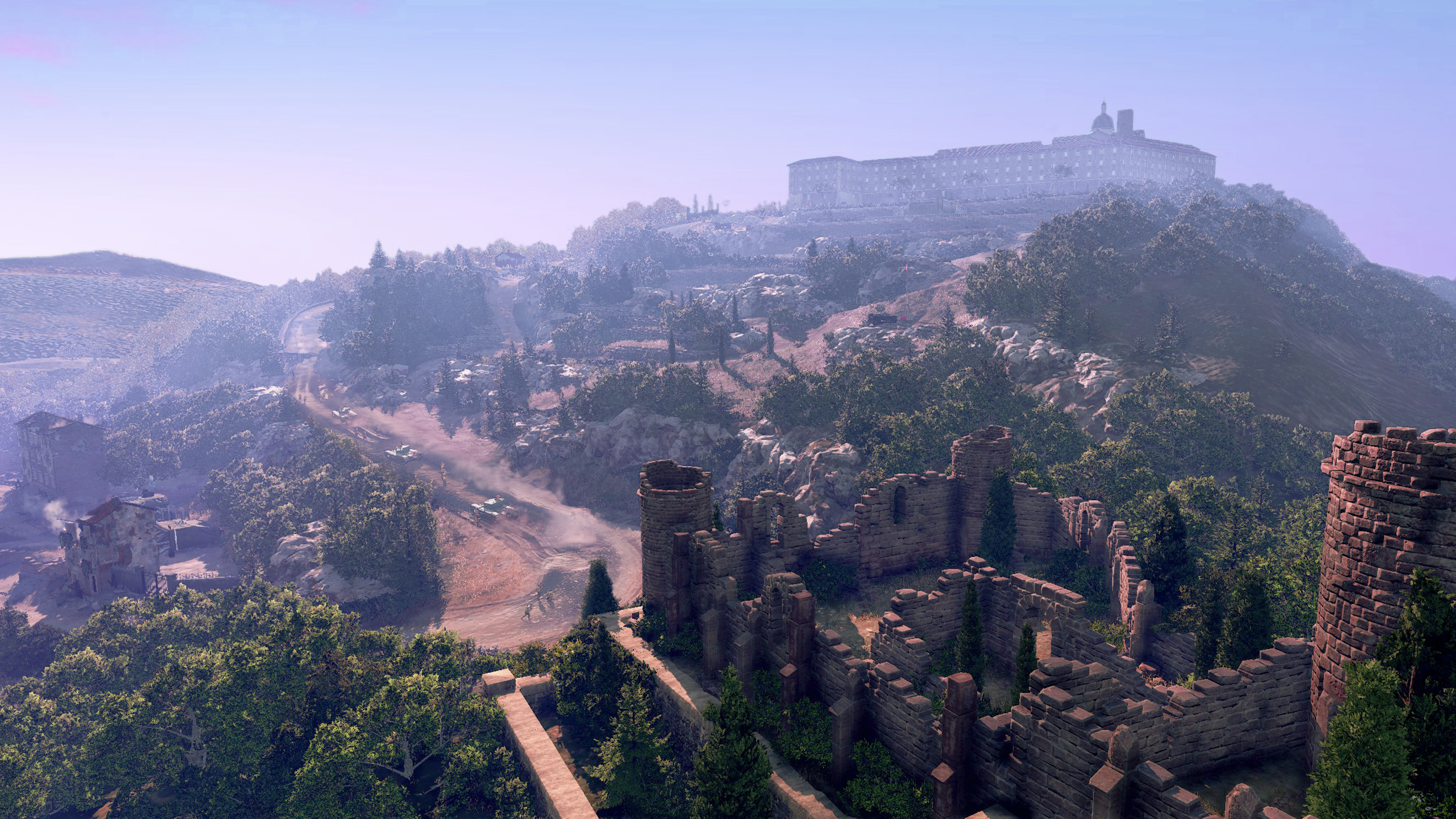
The music will react, too, emphasising the narrative twists and turns of each battle. "It's more interactive than it ever has been," says Janzen. "Because you want to know if you're winning or losing, or if you're getting close to victory. My daughter and I play a lot of Battlefront 2, and the music informs you how you're doing, and I think that's really cool. I think gamers expect that, and Company of Heroes will have that. Even the ambient music, when it gets a little quieter, when we're not in a battle, it'll be somewhat generative. It's not just press play on a big WAV file, it'll sort of weave and change as you go."
Keep up to date with the most important stories and the best deals, as picked by the PC Gamer team.
After the silence is broken, it takes some time for the devastation to really take over. Destruction is gradual, with props—from buildings to foliage—having different damage states, reflecting where they've been hit, by what and how much damage they've endured. As they're battered by projectiles, buildings crumble realistically, deteriorating bit-by-bit before completely collapsing. Bricks get blown off, shockwaves make windows explode, towers come tumbling down.
The Italian landscape is so beautiful and the art creation in our game is absolutely gorgeous. And then we're going to destroy it.
Aaron Janzen, audio director
This granular system also works on vehicles. Just like with buildings, the art team's put together a handsome assortment of military vehicles with special decals and flourishes that give them more personality, emphasising that they're crewed by people, all so they can be systematically destroyed. "These attachments are able to get blown off and break," Brett says, proudly showing off a bunch of detailed tank models. "Which is super cool." That wasn't present in the build I played, but along with the zone damage system it will make sure you know when your tank has been smacked in the side. You'll see parts go flying off and signs of damage in a localised area.
Units reacting to the chaos sells it even more. There's the screams, the barks and the orders—an angry choir full of different accents—but there's also the animation. The tense system makes units look different when they're closer to danger, or casual when they're somewhere safe. Brett's eager to take that even further.
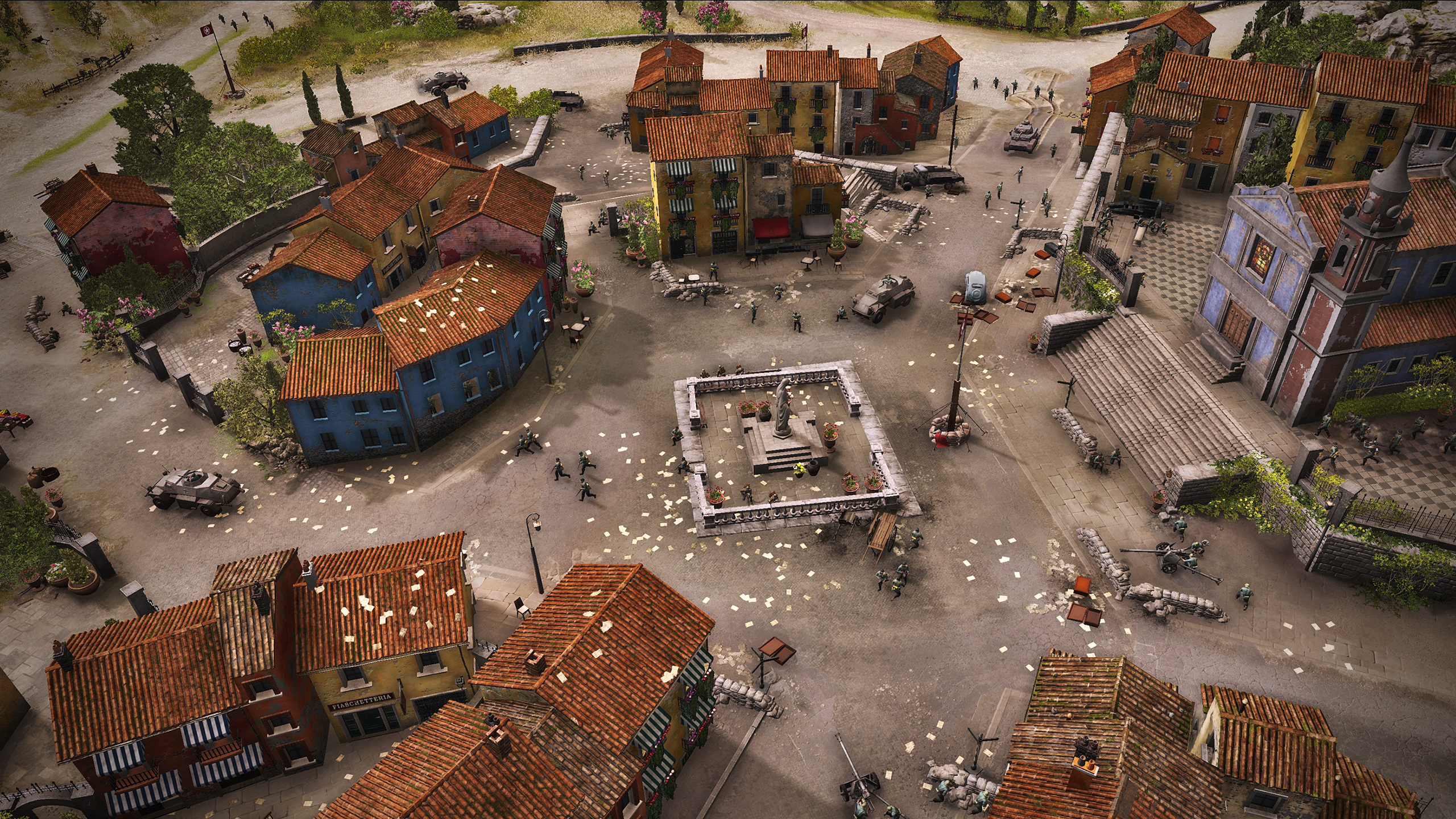
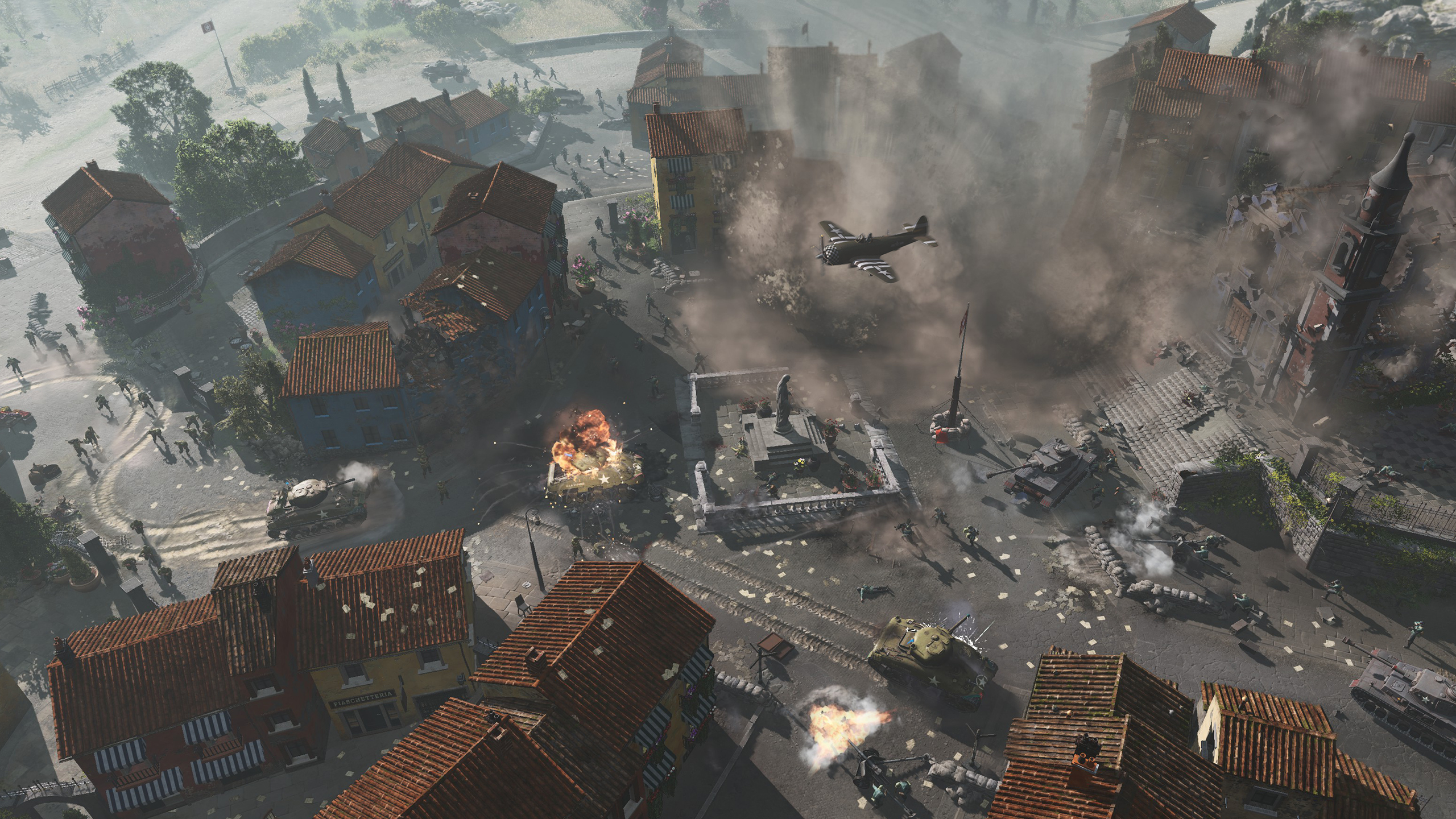
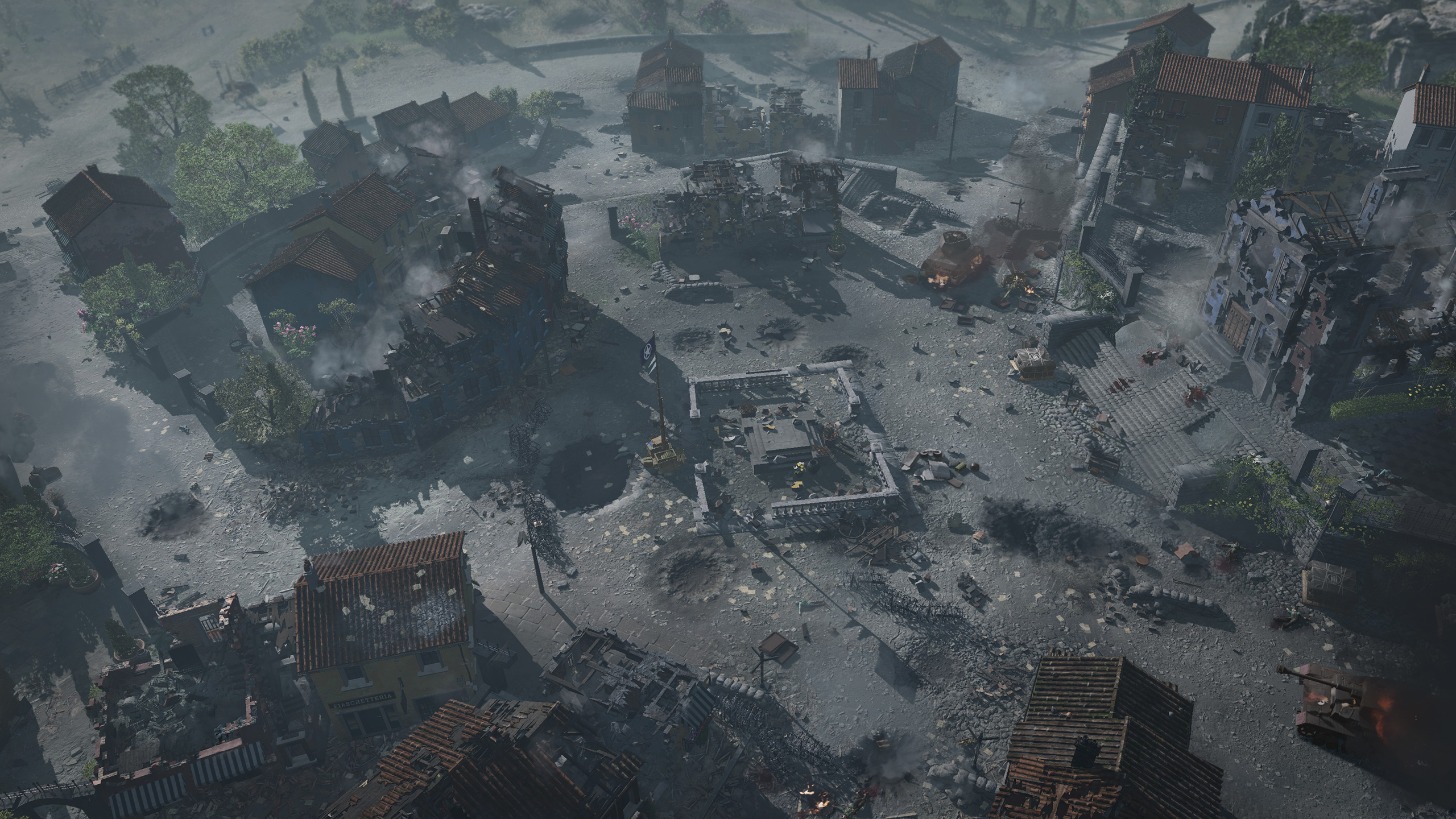
"We have personalities that we haven't fully developed yet, and we only have them between factions right now. The Germans will move a bit differently, have different animations. And those can actually be applied even at a squad level. We have the system, and I'd like to eventually push it even further so we have different personality types within a squad. So we've got the slow, lumbering guy, and the speedy, skinny guy. This system provides that, and gives us room to grow."
Destruction opens up new opportunities, too. Maybe you can tear something down to give you a better view, or use the burned-out carcass of a tank to briefly break line of sight. Demolished buildings can also still provide some cover, and soldiers can hunker down behind bits of fallen masonry. Much better than it falling on their head, which can also happen. A destruction system naturally sounds like something that tries to limit or take something away from you, but here it's additive. The battlefield continues to be alive with tactical options, it just looks a lot more bleak.
"For the allies, Italy was the first introduction to urban combat, and working in cohesion in a space that was very unique to them," says lead campaign designer Andrew Deneault. "It wasn't open fields, it wasn't anything else other than just this kind of gruelling, house to house, structure to structure. And this is where we saw the advent of new infantry techniques like mouse-holing. So I think the destruction tech is going to throw that in front of the player. It's going to challenge them not only to bring buildings down, but to breach them, and deal with those threats in ways that they haven't in previous installations of the franchise."

Tactics like breaching are surgically precise compared to artillery bombardments. It takes time to level a building, and that's time that you might not want to waste. It could be just what the enemy needs to bring in reinforcements, or lock down a capture point. But if you can get some infantry right up to the building, then they can toss a grenade in and storm it, killing the troops inside, or sending them fleeing out the back door. As Deneault notes, destruction can sometimes provide more cover for the Germans to hide behind, so it might be better for you to send your soldiers into the building. These are the kinds of moment-to-moment tactical decisions you have to get used to while liberating Italy.
Civilians also play a role in Company of Heroes 3, adding another layer of tension to the war. One notable example is during preparation for the assault on Monte Cassino, which one of your advisors suggests needs a good bombing. Your partisan liaison, however, notes the likelihood of civilians hiding in the area, making an attack high-risk. You are given opportunities to find out if this is the case, and regardless you can still order the bombardment. It's a reminder that this warzone is full of people's homes, businesses and places of worship and that, as fun as it is to see buildings being torn down, there are hefty consequences.
Company of Heroes 3 is coming next year, but you can check out the destruction system and everything else long before launch. There's already an alpha demo available through the Games2Gether programme, and more slices will be released throughout development.

Fraser is the UK online editor and has actually met The Internet in person. With over a decade of experience, he's been around the block a few times, serving as a freelancer, news editor and prolific reviewer. Strategy games have been a 30-year-long obsession, from tiny RTSs to sprawling political sims, and he never turns down the chance to rave about Total War or Crusader Kings. He's also been known to set up shop in the latest MMO and likes to wind down with an endlessly deep, systemic RPG. These days, when he's not editing, he can usually be found writing features that are 1,000 words too long or talking about his dog.

